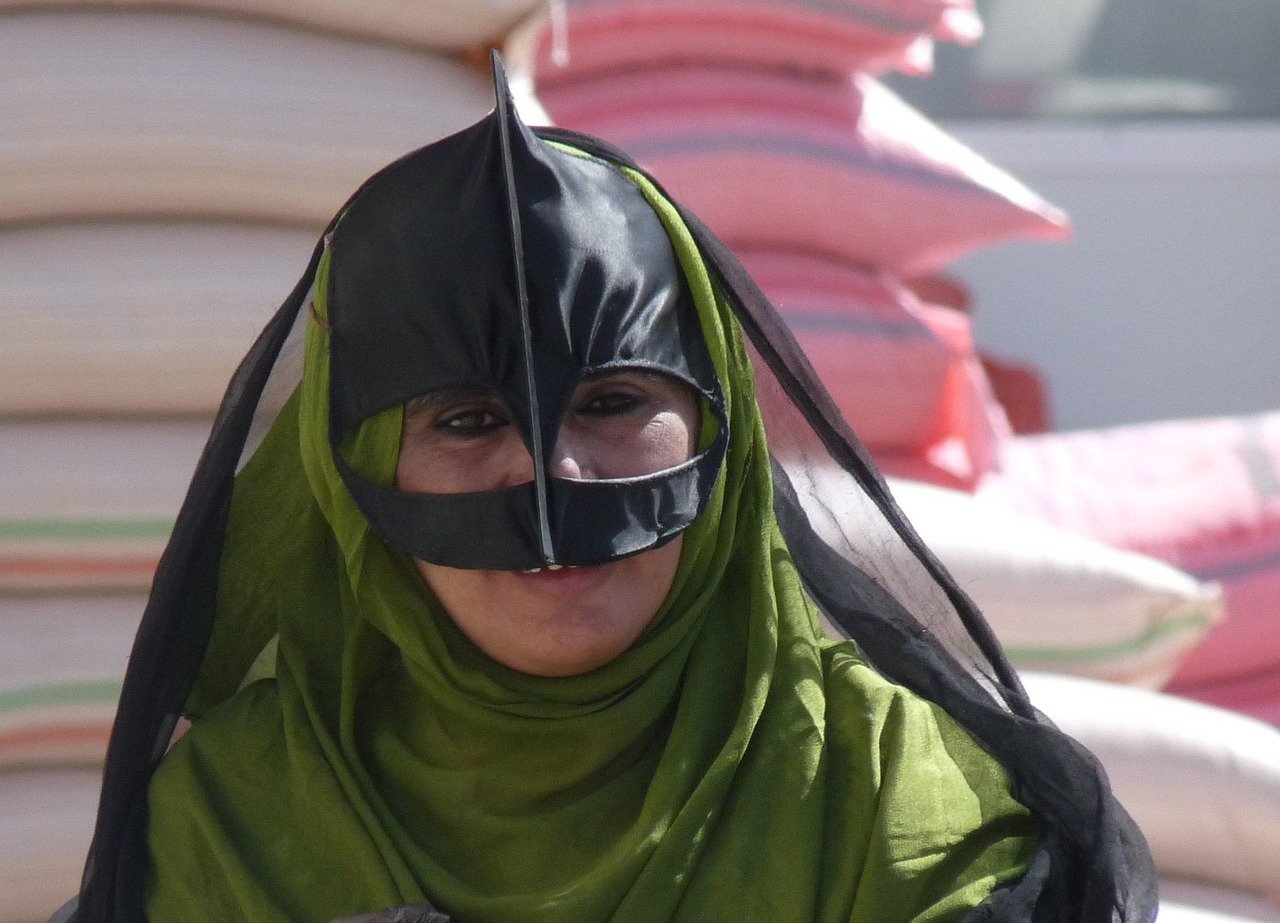Introduction
Ibadi Islam, is the third but unforgotten sect of Islam. Many people believe that Islam is fundamentally divided into two sects: Sunni and Shia. However, some divide Islam into three groups—Sunni, Shia, and Sufism—but this is not accurate. Sufism is a shared spiritual tradition found in both Sunni and Shia sects. According to reputable researchers, Islam actually has three fundamental sects: Sunni, Shia, and the third, often forgotten sect of Islam—the Kharijites, whose modern representation is known as the Ibadi school of thought.
However, it is important to clarify that Ibadis strongly reject any association with the Kharijites. This sect is the majority among Muslims in the Sultanate of Oman. Additionally, followers of this sect are also found in some African countries, including Tunisia, Morocco, Algeria, Nigeria, and Tanzania. It is often referred to as the “forgotten sect” of Islam, and more research is still needed on it.
If one reads about the events of the Kharijites, it becomes clear that they were an extremely violent group. They martyred many companions of the Prophet (PBUH), including Hazrat Ali (RA), and through their brutal actions, they greatly damaged the reputation of Islam.

In this article, we will explore the connection between the Ibadi school of thought and the Kharijites. How did this sect come into existence, and how has it maintained its identity until now? What are their core beliefs? How do they interact with other Muslim sects? And who are some of the notable figures in the world associated with this sect?
In 657 CE, when relations between Islam’s fourth caliph, Hazrat Ali, and Hazrat Amir Muawiya (Syrian Governor) were extremely strained, and the Battle of Siffin was raging between them, a large number of Bedouins from Iraq joined Hazrat Ali’s army to fight against Hazrat Amir Muawiya’s forces. According to some accounts, the number of these Bedouins exceeded twelve thousand.
At the end of the Battle of Siffin, when Hazrat Ali and Hazrat Amir Muawiya agreed to a ceasefire and moved toward signing a peace treaty based on each other’s terms, these Iraqi Bedouins—numbering over twelve thousand—rose in opposition to the peace agreement. Hazrat Ali tried to reason with them, but they turned against him as well. They even issued a fatwa (religious decree) calling for his martyrdom.
These Bedouins began verbally abusing both Hazrat Muawiya and Hazrat Ali and launched wars against both of them. They claimed that “only Allah is the true judge”

and that the rebellion started by Hazrat Muawiya should be ended according to the principles of the Quran. When they refused to obey Hazrat Ali, he labeled them as Kharijites (meaning “those who have exited the fold of Islam”).
In 658 CE, Hazrat Ali declared war against them and decisively defeated them in the Battle of Nahrawan. Abdullah ibn Wahab al-Rasibi led the Kharijites in this battle, claiming that his group was the true righteous faction, the original upholders of Islam. Al-Rasibi became the first leader of their group and commanded their army in the Battle of Nahrawan, while the Kharijites declared him their caliph. However, Abdullah al-Rasibi was killed by Hazrat Ali’s forces in the battle.
After this defeat, the power of the Kharijites was shattered. Nevertheless, the surviving members went underground in Basra, Iraq, and continued their activities in secrecy. Three years later, in 661 CE, a Kharijite member named Ibn Muljim assassinated Hazrat Ali while he was leading prayers in the city of Kufa, Iraq.
Note: If you want to watch the documentary on Ibadi Islam, please click here . . .
Fragmentation Among the Kharijites
After the Battle of Nahrawan and the killing of Abdullah al-Rasibi, the Kharijites split into numerous factions due to internal disagreements. Most of these groups were extremist and remained in constant conflict with the Umayyad Caliphate and later the Abbasid Caliphate. Due to their relentless warfare, these groups gradually weakened and eventually nearly disappeared.
However, one faction, led by Abdullah ibn Ibadh and Jabir ibn Zaid, adopted a relatively peaceful and tolerant approach. This group came to be known as the Ibadi sect, named after its founder, Abdullah ibn Ibadh al-Tamimi, and continues to be recognized by this name today.
Abdullah ibn Ibadh al-Tamimi: The Founder
Historical records do not precisely confirm Abdullah ibn Ibadh al-Tamimi’s birth year. However, historians agree that he was born in the 7th century CE in Arabia and spent most of his life in Basra, Iraq. According to Ibadi scholars, Abdullah ibn Ibadh was a great leader who challenged Umayyad rule.

In 682/683 CE, when Yazid’s forces besieged Mecca and launched a military campaign against Caliph Abdullah ibn Zubair, Abdullah ibn Ibadh not only openly supported Ibn Zubair but also stepped back from the caliphate dispute in his favor. However, some researchers suggest that after Yazid’s death and the lifting of Mecca’s siege, disagreements arose between Abdullah ibn Ibadh and Abdullah ibn Zubair.
Abdullah ibn Ibadh returned to Basra, Iraq, where he began spreading his teachings and eventually established a distinct school of thought. The growth of this movement was largely due to his moderate and administrative approach. While other Kharijite factions were busy declaring other Muslims as infidels (Takfir) and advocating violence, Abdullah ibn Ibadh strongly opposed such extremism and encouraged peaceful propagation of beliefs. This key difference gave Abdullah ibn Ibadh’s ideology a unique identity within the Kharijite movement, allowing the Ibadi sect to flourish, while other Kharijite factions eventually faded away due to continuous warfare. Abdullah ibn Ibad was accompanied by another prominent figure of that time, Jabir ibn Zaid. Jabir ibn Zaid fully supported the views of Abdullah ibn Ibad. Jabir ibn Zaid was actually born in Oman but later migrated with his tribe to Basra, Iraq. Basra was then a center for the Kharijites and their sub-groups. There, he began his religious education. He met with many great companions of the Prophet (Sahabah) and learned Hadith from them. Because of this, Jabir ibn Zaid is also referred to as a Tabi’i (a successor to the Sahabah). Jabir ibn Zaid learned many Hadiths and religious rulings from Abdullah ibn Abbas, the uncle of the Prophet Muhammad (PBUH), and Aisha, the wife of the Prophet Muhammad (PBUH).

Jabir ibn Zaid’s religious contributions are also highly regarded in Sunni Islam. Jabir ibn Zaid was actually born in Oman and was originally from there. For religious education, he went to Basra, Iraq, but was later expelled due to his specific activities. He then returned to Oman and began promoting the school of thought he had learned from Abdullah ibn Ibad. Thus, the Ibadi sect moved from Basra to Oman and flourished there. Abdullah ibn Ibad passed away in 700 CE, while Jabir ibn Zaid died in 711 CE.
Concept of Imamate
The Ibadi sect, in contrast to the Sunni concept of caliphate, believes in the theory of Imamate, similar to the Shia. However, there are significant differences between their concepts of Imamate. According to the Ibadi sect, their first Imam was Abdullah ibn Ibad, who gave the Kharijite ideology an important dimension and form. He was recognized as the first Imam of this sect. Historians state that he died in 700 CE. After him, Jabir ibn Zaid assumed the Imamate and became the second Imam of the Ibadi sect. Later, his relations with the Umayyad Caliphate deteriorated, leading to his expulsion from Basra, Iraq, along with his followers.
After this, Jabir ibn Zaid returned to his ancestral homeland, Oman, and began propagating his beliefs. Eventually, the local Omani people began accepting the Ibadi sect. Finally, in 711 CE, he passed away in Oman.
The Method of Imamate
The Ibadi sect, like Shia Islam, views the political structure of Islam through the concept of Imamate. However, their theory differs from that of the Shia. In Ibadi Islam, the Imam is elected through votes, in which Ibadi Muslims of the society participate and choose their Imam. These Imams carry out the political, military, and religious duties of the state.
In 745 CE, the Ibadis conquered the region of Hadramawt in Yemen and established their first Ibadi state. Later, they expanded their rule to include areas of Yemen, Hejaz, Mecca, and Medina. However, this state lasted only three years before the Umayyads dismantled it in 748 CE and brought it under their control. Just two years later, in 750 CE, the Ibadis succeeded in establishing their government once again in Oman, where it continues to this day.
After Oman, they expanded their influence, establishing various governments at different times in North Africa, including Libya, Morocco, Tunisia, Algeria, and Tanzania (specifically Zanzibar, which was then part of the Omani Empire). Even today, a significant number of Ibadis reside in these regions. In Algeria’s M’zab Valley, the Mzab tribe follows Ibadi Islam. Here, some women cover themselves completely, leaving only one eye uncovered to see their way.
 In Oman, until the 20th century, the Imam was the official head of state. However, the Sultan of Muscat also claimed authority, leading to a power struggle between the Sultan and the Ibadi Imam. Finally, in 1959, with the help of the British army (which was then interested in extracting oil from Oman), the Sultan of Muscat overthrew the Ibadi Imam’s government, bringing all of Oman under his control.
In Oman, until the 20th century, the Imam was the official head of state. However, the Sultan of Muscat also claimed authority, leading to a power struggle between the Sultan and the Ibadi Imam. Finally, in 1959, with the help of the British army (which was then interested in extracting oil from Oman), the Sultan of Muscat overthrew the Ibadi Imam’s government, bringing all of Oman under his control.
The last Imam of Oman was Ghalib bin Ali al-Hinai, who, after his defeat, fled to Dammam, Saudi Arabia, where he passed away in 2009 at the age of 96.
The Position of Grand Mufti in the Sultanate of Oman After the Imamate
After the era of the Imamate in the Sultanate of Oman, the position of Grand Mufti was established. The Grand Mufti also belongs to the Ibadi sect and oversees the religious affairs of the country. The current Grand Mufti is Sheikh Ahmed bin Mohammed al-Khalili, who was born in Zanzibar, Tanzania. His main office is located in Muscat, Oman.
Meanwhile, Oman’s famous Sultan also follows the Ibadi sect. The Sultan’s ancestors were historically connected to the Ibadi Imamate.
Beliefs
The most important belief of the Ibadi sect, which distinguishes them from Sunnis and Shias, is their stance against unjust rulers. The Ibadis do not consider the wars between Hazrat Muawiya and Hazrat Ali as legitimate.
In terms of jurisprudence (Fiqh), the Ibadis are closer to Sunni Islam. In religious matters, they rely on:
- The Quran
- Sunnah and Hadith
- Ijma (consensus)
- Qiyas (analogical reasoning)
This follows a Sunni jurisprudential model, but unlike traditional Sunnis, they do not support Taqlid (blind following of scholars). In this regard, they are closer to the Ahl-e-Hadith or Salafi movements.

However, like the Shia, the Ibadis still support Ijtihad (independent legal reasoning). Their primary Hadith collection is called “Tarteeb al-Musnad”, which is mostly narrated from their second Imam, Jabir ibn Zaid. They consider it the most important source after the Quran. Another significant Hadith collection is “Jami Sahih”, compiled in the 12th century CE.
Ibadi Prayer Practices
- They pray with their hands unfolded (not folded on the chest).
- They do not say “Takbeer-e-Tahreema” (the opening Allahu Akbar in prayer).
- They do not say “Ameen” after Surah Fatiha.
- They conclude the prayer with only one Salaam (to the right side).
Unique Theological Stances
- They do not believe in the return of Imam Mahdi or Prophet Isa (Jesus) to Earth.
- It is also said that they believe that Friday prayers (Jumu’ah) cannot be held unless a just Imam is in power. Since 1959, when their last Imam was removed, some Ibadis have stopped performing Friday prayers due to the absence of a legitimate ruler.
Theology (Ilm al-Kalam)
In theology, the Ibadis largely follow the Mu’tazilite school of thought. They do not believe in the separate attributes of God, rather they consider them to be God Himself. They regard the Quran as God’s created speech and believe that the Quran was created at a specific point in time. They do not believe in concepts like the questioning in the grave by Munkar and Nakir or the Bridge of Sirat on Judgment Day.

According to them, God has no physical form, so no one will physically see God on the Day of Judgment. Regarding sin, they believe that if someone commits a major sin and does not sincerely repent before death, such a person will reside in Hell forever. They believe that humans do not possess free will. In this regard, they are close to the Ash’ari school of theology.
Early Ibadi scholars held the belief that a person who commits sins or whose actions are not in accordance with Islam is not a Muslim. However, modern Ibadis reject this view and advocate coexistence with other Islamic sects. Even today in Oman, Shia, Sunni, and Ibadi Muslims pray together under the same mosque roof. In society, people from all sects live together in peace.
Note: If you know more about the Ibadi sect, please guide us in the comment box below. Thank you!
If you want to read about Shia Sunni divide, please click here . . .

